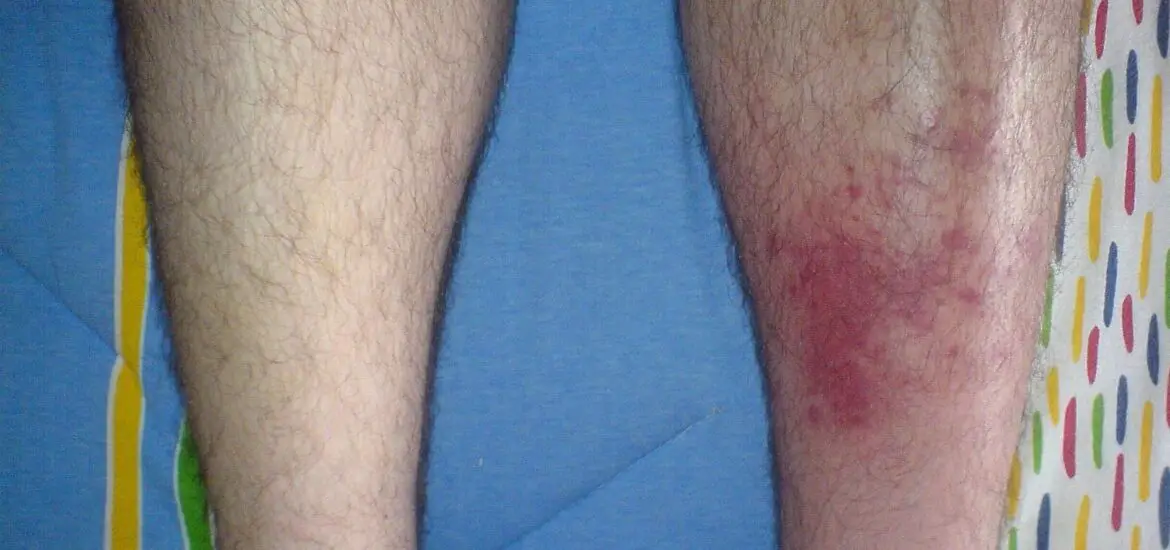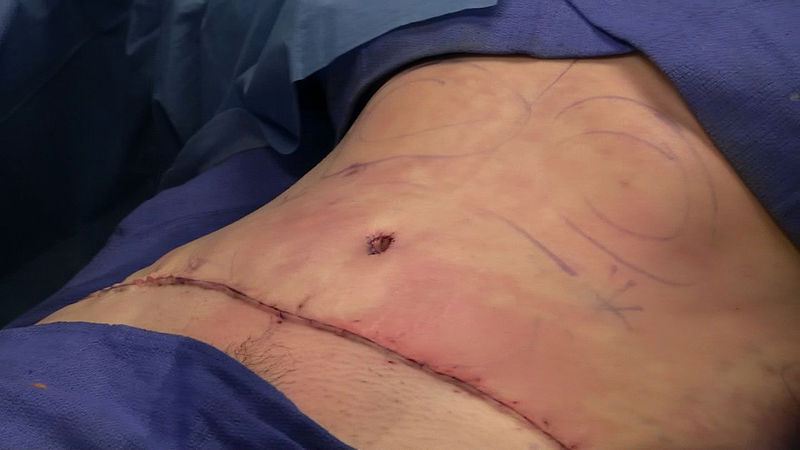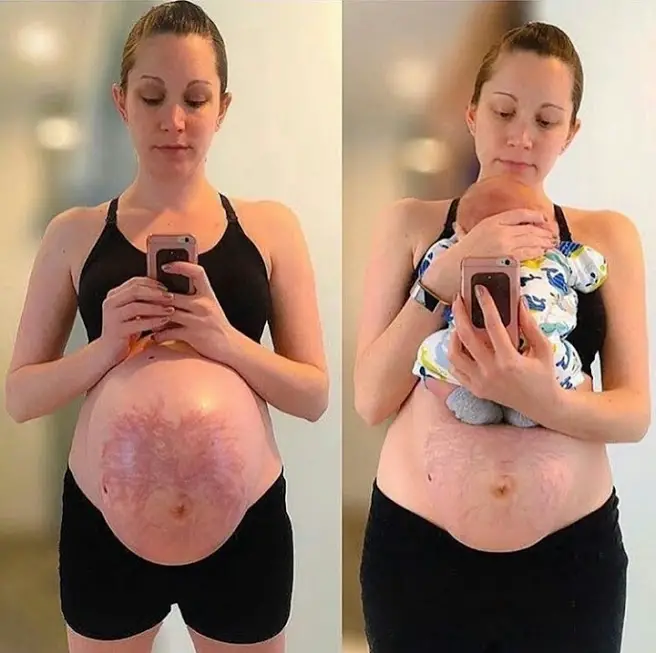Cellulitis is an infection that affects a deeper layer of the skin, and also affects the tissues. Antibiotics treat the infection, but you need to care for the skin after cellulitis.

Table of Contents
Discoloration of Skin After Cellulitis – What to Do
You need to see your doctor for an examination if your skin changes color after cellulitis. It may be nothing because the skin remains discolored even after treating the infection. The discoloration tends to remain, along with some swelling, when you no longer feel any pain.
Typically, your skin turns red when you have cellulitis. But with proper treatment, the redness tends to begin clearing within a short period. However, you may find the skin turning redder and spreading, which means the infection is also spreading. Also, if the skin changes from red to black or purple, it may point to gangrene or dead tissue.
Does Discoloration from Cellulitis Go Away?
Skin discoloration from cellulitis will eventually fade, but it may take some weeks before it happens. You may no longer feel pain, and this happens if your doctor treats the infection with the right antibiotics for about ten days unless the case is severe. But the skin may thicken and change color as the skin continues to heal.
Your skin will return to normal if your doctor correctly treats the infection. The skin discoloration may last several weeks. But if you have a severe case of cellulitis, it may take even longer for your skin to return to normal because the course of treatment takes longer.
Dry Skin After Cellulitis – Remedy
As the infection heals after successful treatment, you may find your skin peeling and looking flaky. It is usually nothing to worry about as it is normal, as long as the pain and swelling keep reducing over time. It is all part of the healing process. You can use moisturizer or lotion to curb the flakiness or peeling and prevent the dry skin from cracking and increasing the risk of further infection. However, speak with your doctor for other possible remedies you can try if you are concerned.
How to Treat Skin After Cellulitis
The following are ways to treat your skin after cellulitis, especially as a way to prevent a recurrence:
Keep your skin from injuries as much as you can. Avoid stings, abrasions, cuts, bites, scrapes, sunburn, and other burns. They leave your skin open to bacteria invasion, increasing the chances of getting infected again.
If possible, avoid involving yourself in activities that may cause such injuries. However, clean and treat any injury immediately after it happens. Wash the affected area with water and soap, and apply an ointment, an antibiotic one. Then, cover it with a bandage. Ensure you clean the affected area and change the bandage as often as your doctor prescribes.
Clean and moisturize your skin every day. Cleaning your skin washes off germs that may cause cellulitis, and moisturizing prevents the skin from cracking and letting in bacteria. It helps to apply the moisturizer immediately after a bath or shower when your skin is still damp. The moisturizer seeps better into your skin and locks in the moisture. Remember to apply it throughout the day, washing your hands before doing so to clean and dampen them.
Furthermore, cut your toenails and fingernails, keeping them as short as possible. Doing so reduces the risk of scratching and breaking your skin. Also, carefully cut the nails so that you do not injure the skin around the area.
In addition, get medical attention for any health condition you may have, especially infections. Athlete’s foot can lead to another case of cellulitis, so it is imperative to treat it as quickly as possible. Also, treating conditions such as leg ulcers, diabetes, and eczema will likely stop a recurrence of cellulitis.
Keep your alcohol consumption moderate if you take alcohol. Have only two drinks a day if you are a man, and one if you are a woman. And lose some weight if you are overweight. Losing weight reduces the risk of getting infected again. Finally, keep an eye on your feet as much as possible to catch an injury. That way, you can treat it on time.
Click here to read these interesting articles…
Skin After Birth [Problems & Remedies]
Skin After Blackhead Removal [Problems, Remedies & Care]
Skin After Botox [Problems, Remedies & Care]
Skin After a C-Section [Problems & Remedies]
Skin After a Biopsy [Problems, Remedies & Care]
Lump Under Skin After Cellulitis – Treatment
You may have an abscess if you find a lump under your skin after cellulitis. The antibiotics you take to treat cellulitis tend to take care of the abscess. But in some cases, the abscess may need to be drained of pus if the antibiotics do not work on it. Therefore, see your doctor if you notice a lump under your skin, close to or on the infection site after treating cellulitis.
An abscess is usually a hard lump filled with pus, forming close to the infection site. More times than not, such an abscess forms due to the presence of dead blood cells and bacteria. They cluster, build up, and form the abscess.
Skin Rash After Cellulitis – How to Treat
It is not typical to have a rash on the site of treated cellulitis. So, contact your doctor to report the development if you see a rash on your skin after cellulitis. Usually, symptoms of cellulitis include a rash or a skin sore. But the symptoms disappear as you take antibiotics to treat the infection. Therefore, the rash should not appear or remain after the treatment. It may stem from another skin condition, and only your doctor can verify it.
Skin Thickening After Cellulitis – What It Means
You may find your skin thickening and discoloring as you treat cellulitis. The thickness will resolve over several weeks, along with redness and pain. It is usually nothing to worry about unless pain and swelling accompany it. See your doctor for an examination if you are concerned about skin development.
It helps to elevate the affected area above the level of the heat to improve healing. That is because once the skin properly heals, the skin may soften faster than normal. Keeping the area elevated will reduce any swelling and encourage faster healing. In addition, clean and keep the area as dry as possible, even though you can bathe or shower as you typically would. After bathing, apply moisturizer to keep the area hydrated. Hydration makes the skin softer and more pliable.
Recap
It is crucial to take care of your skin after recovering from cellulitis. The skin tends to be vulnerable to getting cellulitis again, especially if it breaks due to dryness or injury. Therefore, keep an eye on your feet and legs, and treat any wound immediately after it happens. Also, contact your doctor if you suspect infection for speedy treatment.
Skin After Cellulitis – Frequently Asked Questions
1. Tight Skin After Cellulitis
Tightness of the skin is part of the symptoms of cellulitis, but it should not be present after treating the infection. If your skin feels tight after cellulitis, it may be due to the skin thickening as it heals. But it is best to report the issue to your doctor to see if it means something more.
2. Skin Turning Black After Cellulitis – Treatment
Seek immediate medical attention if your skin begins to turn black after cellulitis. The same applies if the skin color changes to purple. Typically, cellulitis causes the skin to turn red and become smooth, swollen, and shiny. But if it becomes dark, it may indicate dead tissue or what medical experts call gangrene.
3. Does Skin Blanch with Cellulitis?
Skin affected by cellulitis may blanch, but it does not always happen. Blanching means the affected area turns white when you press it. With cellulitis, you may find you cannot apply enough pressure to trigger blanching due to the pain.

